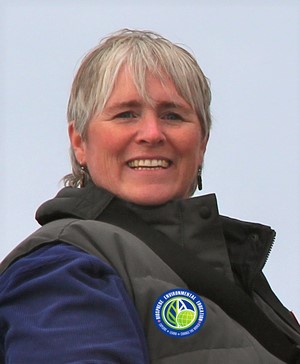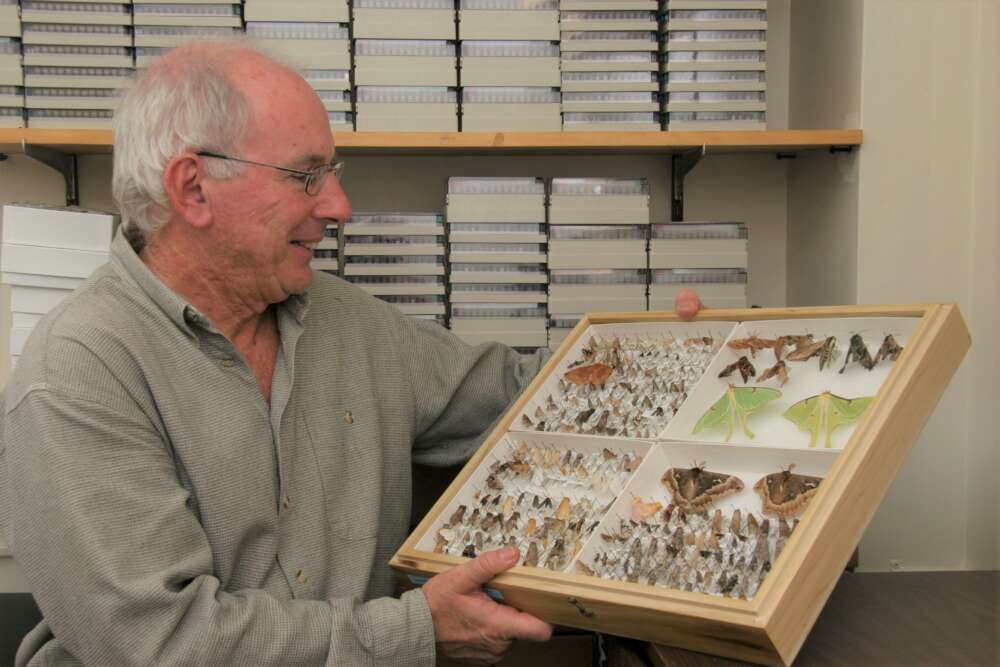Today the University of Guelph’s Centre for Biodiversity Genomics (CBG) is the hub of a worldwide research collaboration to catalogue all life on the planet.
This ambitious project’s origins lie in a discovery by scientists in the University’s former zoology department that a short stretch of genetic material could be used to distinguish species of animals.

Twenty years ago this month, the team announced their discovery in a research paper that introduced the term “DNA barcoding” to describe a potential identification system for all the globe’s organisms.
The lead author for Biological Identification Through DNA Barcodes was Dr. Paul Hebert, currently a professor in the Department of Integrative Biology within the College of Biological Science and CBG director. His three co-authors were:
- Dr. Jeremy deWaard. An undergrad in Hebert’s lab during data collection and analysis for the paper, deWaard had begun a master’s degree by 2003. Now he’s CBG’s associate director of collections and oversees a natural history collection on campus of more than eight million specimens of barcoded organisms.
- Dr. Shelley Ball. A post-doc in the lab in 2003, she now heads BIOSPHERE Environmental Education near Ottawa. After two years at U of G, Ball took up another post-doc in New Zealand, where she helped develop a barcode-based tool used by the country’s agriculture and forestry ministries to identify potentially invasive insect species.
- Dr. Alina Cywinska was also a post-doc in U of G’s former zoology department in 2003.
The 2003 publication “was one of the most important papers I’ve ever been part of,” said Ball this month. “It has stimulated research on a global scale.”
Hebert said citations involving barcoding far exceed the citations for his research on water fleas between 1972 and 2003. Tongue-in-cheek, he said, “I basically wasted the first 30 years of my science career. DNA barcoding was the best idea I ever had.”
20 things to know about DNA barcoding
Two decades on, here are 20 things to know about DNA barcoding, past and present.
1. The research team first submitted their paper in 2002, but it was rejected. After revisions, the paper was published on Feb. 7, 2003, in the Proceedings of the Royal Society B: Biological Sciences.

2. It’s become the most cited article ever published by this journal, which was established in 1831. Google Scholar ranks the publication as “extremely highly cited.”
3. The International Barcode of Life consortium of scientists contributing specimens to the barcode reference library involves more than 1,000 researchers from 41 countries on six continents – including the most recent nation to join iBOL: Kuwait.
4. Hebert came up with the barcode metaphor while observing the universal product codes distinguishing individual items on the shelves of a local grocery store.
5. Besides collecting specimens for the project database, CBG scientists aim to learn about interactions among species in ecosystems and track changes in species composition through time and space – a form of biosurveillance to monitor the health of ecosystems and the planet.
6. Cost of sequencing a single specimen in 2003: up to $30. Specimen sequencing cost with current analytical techniques: five cents.
7. DNA barcoding has not replaced traditional Linnaean taxonomy, or species identification based on the appearance of an organism and its parts. Over the 250 years since Linnaeus’s time, traditional taxonomists have named about 1.2 million species of animals on Earth. Barcode records have been accumulated for some 900,000 animal species; Hebert predicts that the number of barcoded species will surpass those with traditional taxonomic names within five years.

8. Total funding from Canadian and international supporters (public and private) for construction and operation of the CBG: nearly $200 million.
9. Although DNA barcoding relies on a single short stretch of genetic material called CO1 for identifying many multicellular organisms from polar bears to caterpillars, genetic identification of many living things, notably plants and fungi, requires other barcoding stretches of DNA.
10. The CBG is one of 19 Canadian research centres supported by Canada Foundation for Innovation’s Major Science Initiatives program, which funds research infrastructure of national importance.
11. Although much of Hebert’s time is now occupied with running the CBG, he still manages occasional field trips. During his family’s latest travel to Australia, he spent two weeks collecting thousands of insects to expand the DNA barcoding library.
12. DNA barcoding has become part of the United Nations strategic plan for biodiversity, embodied in the UN’s Convention on Biological Diversity adopted by the global organization in 1992.
13. “Splatology”: An invented word to describe the practice of collecting insects and other debris from car windshields, building windows and other surfaces for which the CBG hopes to make DNA barcoding sampling kits available this year.

14. Number of specimen images contained in the BOLD database: more than four million.
15. Metabarcoding: A technology developed by CBG researchers for collecting and analyzing many species at once from bulk environmental samples such as soil or water, and key for monitoring changes in environmental quality.
16. Beetles, butterflies, mollusks and worms were among the creatures whose DNA was analyzed in the 2003 paper – and whose relatives are among the numerous multicellular life forms around the planet still being catalogued by iBOL researchers.
17. DNA barcoding underpins numerous worldwide research projects, too many to list. Just one example: Under a project approved this month by Global Affairs Canada and led by World University Service of Canada, researchers in Ghana, Cote d’Ivoire and Guinea will help protect ecosystems under global changes.
18. Between 2010 and 2015, iBOL researchers worldwide collected DNA barcodes for 500,000 species. BIOSCAN, a seven-year project launched in 2019, will raise coverage to two million species from around the globe.
19. Based on barcoding technology, Lab in the Box includes hardware needed to rapidly identify species at hospitals, food markets, airports and shipping docks where detection is critical for ensuring human health or for deterring trafficking in endangered species.
20. As for the Holy Grail of a DNA scanner for your phone or other handheld device: That’s still in the future but coming, says Hebert.
Contact:
Hannah James
hjames@uoguelph.ca
